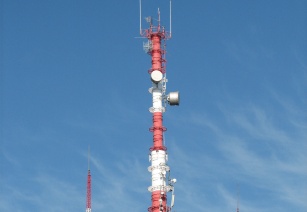Broadband is growing everywhere and for Africa, where the geography and terrain are the main obstacles to rolling out fixed solutions, mobile broadband is the way forward in the delivery of Internet and high bandwidth services to even the remotest regions and communities.roadband is growing everywhere and for Africa, where the geography and terrain are the main obstacles to rolling out fixed solutions, mobile broadband is the way forward in the delivery of Internet and high bandwidth services to even the remotest regions and communities.
As manufacturers deliver less expensive smartphones to such markets the stars seem to be aligning in favour of mobile advertising being a new and exciting revenue generator, not only in mature markets, but also across emerging markets.
The face of mobile communications in emerging markets is changing faster today than at any other time. New technologies are enabling the viable deployment of remote wireless networks into even the most isolated regions leading to the spread of mobile broadband. And while the rest of the world goes crazy for mobile apps and smartphones, which, at present, do not offer a vehicle of any value for emerging market MNOs to reach their wider, low-ARPU, domestic users, it will not be long before the situation changes due to the arrival of high-functionality smartphones at lower and lower prices. MNOs across Africa find themselves with the same opportunities for delivering a range of new, revenue-generating and mobile broadband-based services – with mobile advertising being an every-day part of that mix.
Apps, smartphones and mobile advertising - reaching out to emerging markets
At London’s Open Mobile Summit the message delivered underlined that the mobile value chain had entered a new Internet era, one which sees an exciting new application ecosystem rising across a range of mobile operating systems (OS), and delivered to the end user on an ever increasing family of smartphone devices. Speakers predicted that in 2011 this whole new environment will “explode”, particularly as smartphones hit low price points and reach a much wider user base than the current preserve of the affluent. Further icing on the cake is that this whole technological scenario is supported by the arrival of 4G, which will provide super high-speed wireless broadband to support the delivery of the Internet, everywhere.
However, the final piece of the jigsaw was mobile advertising’s role in monetising this open mobile Internet economy. With 4G supporting an imminent flow of affordable smartphones onto the global market over the next few years, including emerging countries, even mobile advertising’s most sophisticated formats will be deliverable not just to a few but to many.
Low-cost, mass-market devices running Android and Symbian are already expected to be available to consumers by the end of 2010 and a presentation at the summit from Orange included their projection that 50 per cent of new handsets they buy as a network operator will be running a smartphone OS by the end of the year.
That whole message is echoed by Strategy Analytics in their recent ‘Smartphone Growth in Emerging Markets’ report by Thomas Kang, which predicts that over the next five years Asia, Africa, the Middle East, Eastern Europe and Latin America will more than triple their smartphone volumes to be among the world's fastest-growing regions for uptake of these new mobile devices. Emerging markets overall will become some of the biggest for smartphone uptake and that opens up the whole market to maximizing the opportunities presented by mobile advertising.
Regional developments – South Africa
Last year Vodacom S.A. introduced mobile location-based advertising (LBA) supported by the latest version of its social networking platform – Grid. Ads are delivered based on a user’s cell phone location within a 10km radius of the user, making it possible for local retailers to promote special offers available at their stores in the vicinity of the user.
MTN SA meanwhile, has been operating its ad-serving platform, Advert Manager, for the past 18 months. This enables the insertion of advertisements into the unused character space of the SMS messages it sends out for services including voicemail notifications, instant messages and balance inquiries.
Other regions
On the other side of the Atlantic Claro Brazil has been helping brand advertisers to deliver targeted, full-screen adverts to subscribers, at the end of every call. The operator deployed its mobile advertising solution nine months ago and ad delivery is based on subscriber demographic and interest profile. What the user gets in return are rewards points for each advertisement viewed, which are then redeemable for free services.
Perhaps the biggest MNO player making considerable strides with mobile advertising is Vodafone through its Vodafone Marketing Solutions group. Over 2,000 campaigns have been run across networks for hundreds of leading global brands including: Coca Cola, Diageo, General Motors, and HP. These campaigns have shown mobile banner campaigns as most popular, although the company is experimenting with other and newer mobile advertising formats such as branded content, location based ads, sponsored alerts, opt-in push messaging and advertising on service-based text messages such as the abovementioned activities of MTN.
Tomorrow , Mobile Apps and Browsing – Today it’s all about Messaging
The latter forms of advertising mentioned above – opt-in push messaging and advertising on service-based text messages – remain the most powerful today. While tomorrow mobile advertising will be all about applications on smartphones, browsing, and using sophisticated technical features such as location-based advertising, today, messaging channels such as SMS and USSD allow brands to communicate with every consumer that has a phone – any phone – in any market, and not just the privileged segments that have smartphones. For reach, for powerful responsiveness, and for creative simplicity, it is hard to beat messaging as a communications vehicle. With typical campaigns run by inserting adverts into messages on the network for, say, top-ups and missed calls, and targeting subscriber segments who have volunteered to receive selected communications. Responding to consumers who text in to win, to learn, or just to engage with a brand, these messaging-based solutions will be mobile advertising’s mainstay for some time to come.
Cathal O’Toole, Head of Mobile Advertising, Jinny Software



































